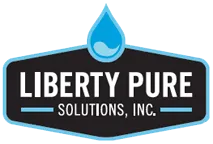Understanding the Risks: Could Your Well Water Contain Toxins?
For many rural homeowners, well water serves as a reliable and accessible source of hydration. However, while well water may appear clear and taste fine, there can be hidden dangers lurking within it—specifically, toxins that pose risks to health. Unlike municipal water supplies that undergo rigorous testing and treatment, private wells require proactive monitoring to ensure their safety. Let's delve into the potential sources of toxins in well water and how you can safeguard your family's health.
Identifying Potential Toxins
Well water can become contaminated by a variety of substances, depending on factors like local geology, agricultural practices, and proximity to industrial sites. Common toxins found in well water include:
Bacteria and Viruses: Without proper disinfection, well water can harbor harmful microorganisms like E. coli and coliform bacteria, leading to gastrointestinal illnesses.
Nitrates and Nitrites: These compounds, often from agricultural runoff or septic systems, can pose serious health risks, particularly for infants and pregnant women.
Heavy Metals: Naturally occurring metals like arsenic, lead, and mercury can leach into groundwater, causing long-term health issues such as neurological damage and cancer.
Volatile Organic Compounds (VOCs): Chemicals from industrial activities or household products can contaminate groundwater, potentially causing respiratory problems and other health issues.
Testing and Treatment
To ensure your well water is safe for consumption, regular testing is essential. Testing should cover a broad spectrum of contaminants, including bacteria, nitrates, metals, and VOCs. It’s recommended to test annually for bacteria and nitrates, and every few years for other contaminants depending on local conditions.
If contaminants are found, appropriate treatment methods should be employed. Common treatments include:
- Filtration Systems: Such as activated carbon filters for VOCs or reverse osmosis for heavy metals.
- Disinfection: Chlorination or UV light treatment to kill bacteria and viruses.
- Ion Exchange: For removing nitrates and other ions.
- Arsenic Removal Systems: Specialized filters or treatment processes designed for arsenic removal.
Preventive Measures
Preventing contamination begins with proper well construction and maintenance. Wells should be located away from potential sources of contamination, regularly inspected, and properly sealed to prevent surface water infiltration.
Additionally, practicing good water management around your property—such as maintaining septic systems, reducing chemical use, and properly disposing of hazardous materials—can help minimize risks to groundwater quality.
Conclusion
While the prospect of toxins in well water may seem daunting, awareness and proactive measures can significantly mitigate risks. Regular testing, proper well maintenance, and appropriate treatment technologies are key to ensuring the safety and quality of your drinking water. By taking these steps, you can enjoy the peace of mind that comes with knowing your family’s water supply is clean, safe, and free from harmful toxins.
